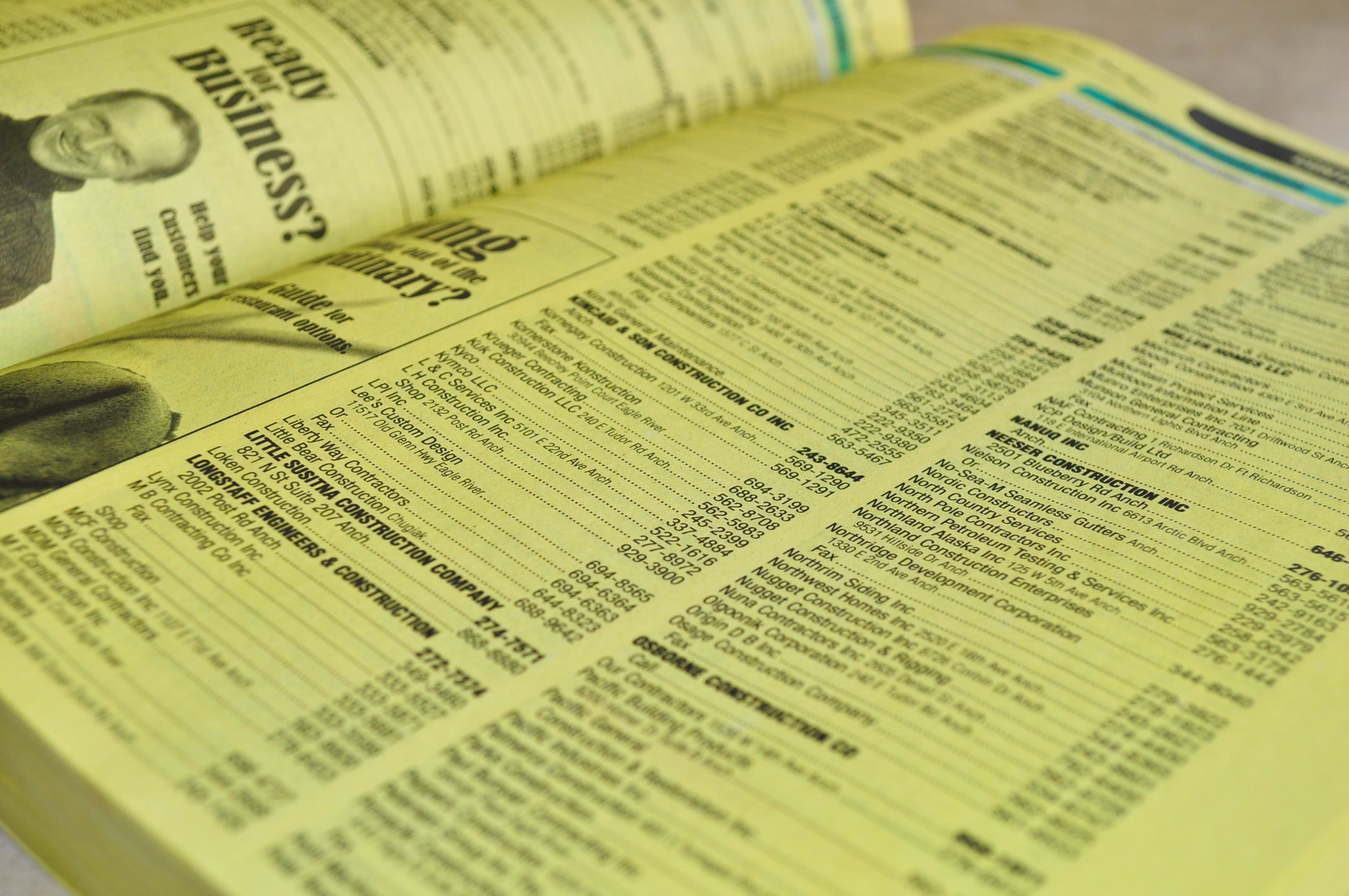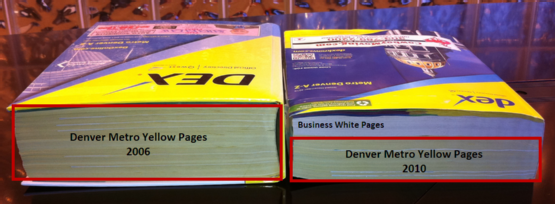 Yellow Pages Advertising.
Yellow Pages Advertising.
Yellow pages is a near and dear topic with Chris, he started his marketing career in the yellow pages industry with the oldest & largest (market share) in the Denver area. For the record, Chris still believes that the yellow pages has it’s place in small & medium business advertising programs. To keep this in perspective a thorough needs analysis must be done. Target demographics, such as age of typical consumer, trade area, and other things must be uncovered before a solid recommendation can be made about headings, size, and monetary investment.
Strong points:
- Consumer driven, the customer picks up the product when they needs a product or service.
- Yellow pages works for your business 24/7
- Headings are diverse (aprox 4500) so you can spend money in profit centers that make sense.
- The book is delivered FREE (normally 1 time a year per book)
- The book is delivered to every home and business (unless opted out of).
- The book requires NO internet connection.
- A broad selection of business to choose from.
- Utility publishers are required to list every business line (except of non-published numbers)
- Versatility of ad sizes allows for most business to be able to afford advertising.
- Billing is monthly, credit generally extended to business for 12 months.
- Advertising creative is normally included in rate.
- Deep discounts off published rate card is available.
- Creditability is generally associated with listed businesses.
- Yellow pages customers generally pay full rate.
- Yellow pages customers generally have more disposable incomes.
- Track Line phone numbers allows you to track advertising ROI.
- Semi Eco-Friendly (made with recycled material)
Weaknesses:
- Yellow pages usage continues to diminish year over year.
- Rates of advertising continues it increase year over year.
- With higher costs and diminished usage ROI is harder to prove.
- Some cities have passed legislation requiring opt-out or opt-in for receiving the book.
- Advertisements are static for 1 year.
- Limited space to relay your message.
- Penetration of competitors practically forces your choice in ad size.
- Standing ads have a seniority date forcing you to buy larger.
- Tracking is very limited, phone calls are the only tangible gauge. (generally number of calls with no quality measure)
- Multiple publishers in any given area.
- Multiple directories per publisher.
Working with other forms of media:
Like internet search, yellow pages have always played well with other media because of the nature of directional media being customer driven. We use creative media to plant a seed, or at the very least create awareness of a brand, then when the customer has reached the purchase phase they use a directional form of media to connect with the retailer or service provider to make the purchase.
Example: Jerry is watching TV and sees an advertisement for a personal injury attorney, he has no need to contact a personal injury attorney so the message doesn’t make a buying decision. Three weeks later Jerry is involved in an automobile accident, he thinks that he might need some representation in dealing with the other parties insurance company, so he now has 2 options. Option 1. look online for that personal injury attorney he saw on TV. The only thing he remembers about the TV ad is the slogan or jingle, he types it into the search engine and does research, or contacts the attorney. Option 2. pick up the phone book and look for the attorney based on the same slogan.
Online yellow pages directories:
This is a great article from a former yellow pages consultant that is well written and explains the reality for one yellow pages publisher.
Yellow Pages “Mirror of the Marketplace” Reflects Steep Downward Slide
by Jeff Kron.
Advertising money always follows the eyes and eyes are clearly online.
As traditional print media suffers the continued migration of advertisers to the Internet; local directory publishers scramble to stop the revenue hemorrhaging by offering pricing deals and online options to advertisers that remain. The effort to entice newcomers is of course a priority as many long relationships turn elsewhere. Bankruptcy, reorganization, distribution cutbacks and layoffs are some of the tactics employed to cauterize the wound.
The findings:
The issue published in November 1998 had 2341 pages A to Z. Today’s current issue, published in December 2010 has a total of 1243 pages A to Z; a net loss of 1098 pages, or a decline of 53% over the past 12 years.
More striking has been the accelerated rate of decline during just the past 4 years. Let’s take a look at the years in which the effects of Internet use has likely had the greatest impact.
The Dex Denver Metro yellow pages, published in November 2006 contained 2107 pages, A to Z. This compared to the current Dex Denver Metro yellow pages which contains 1243 pages, A to Z, indicates an erosion of 864 pages; a 41% loss of published advertising pages in just a 4 year span. This 4 year period loss accounts for 79% of the total loss suffered during the past 12 years.

